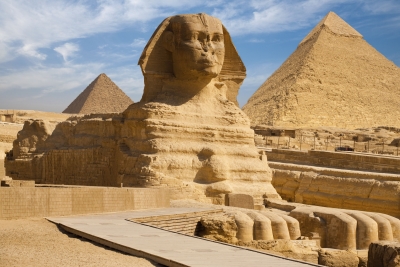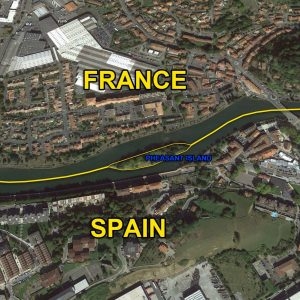WHICH IS THE LARGEST MONOLITHIC STATUE IN THE WORLD?

The Great Sphinx at Giza is the world's largest monolithic statue.
Egypt, the land of pharaohs and pyramids never fails to amaze its visitors with its rich culture, mysteries and monolithic pieces from the medieval times. One such mighty monument that has hundreds and thousands of spectators completely in awe is the Great Sphinx Of Giza, an imposing statue body of a lion and head of a human. Carved out of a single block of the surrounding limestone bedrock, this colossal Egyptian antiquity is claimed to be the oldest and the largest known sculpture in the world.
The prime reason to why the Sphinx was constructed is still unknown, but some historian buff and archaeological experts believe that the statues were sculpted to guard important areas. Likewise, the Great Sphinx Of Giza was constructed to guard the large three pyramids of Giza i.e., pyramids of Khufu (Cheops), Khafre (Chephren) and Menkaura (Mycerinus).
Archaeological also believe that this gigantic sphinx was once colorful with the face painted red and the body painted with blue and yellow color. They also claim that the Sphinx once has a long beard and a nose, which are now missing.
Built-in 2500 BC during the Fourth Dynasty of the Old Kingdom, the Great Sphinx Of Giza in Egypt sits on the Giza plateau right in front of the Great Pyramid of Giza. Facing east, this stunning monument shimmers with the rising sun each morning and the Great Sphinx of Giza height is 73 meters long and 20.21 meters. The Sphinx was submerged beneath the desert and the first documented attempt to clear the sand was undertaken in 1400 BCE with the pharaoh Tuthmosis IV.
After a series of the restoration process, the giant structure once again found itself buried under the sand up to its neck when Napoleon came to Egypt in 1798. Later, there were many excavation projects conducted to clear the sand from 1816 to 1858 by some of the well-known antiquarians including Giovanni Caviglia, Auguste Mariette, and Gaston Maspero, but were forced to abandon the process due the sand.
Picture Credit : Google
